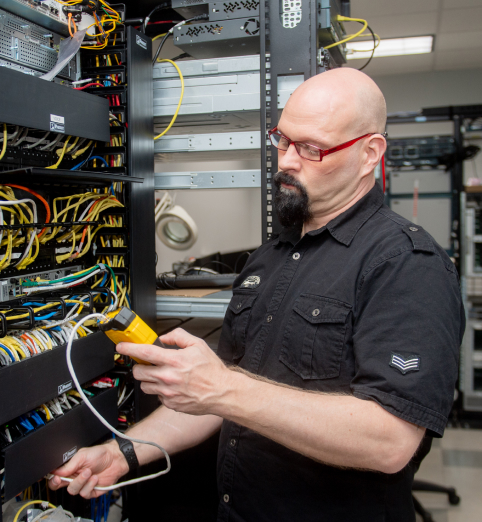Product Overview
The Cisco® ASR 1000 Series SPA Interface Processor (SIP), based on the Cisco I-Flex design, combines shared port adapters (SPAs) and SPA interface processors (SIPs), taking advantage of an extensible design that facilitates service prioritization for voice, video, and data (triple-play) services. Enterprise and service provider customers can take advantage of improved slot economics resulting from modular port adapters that are interchangeable across Cisco routing platforms.
The Cisco ASR 1000 Series SIP accepts up to 4 half-height Cisco SPAs, including Ethernet, ATM, Packet over SONET/SDH (POS), and Serial SPAs, providing up to 10-Gbps (SIP10) or 40-Gbps (SIP40) connection to the system backplane with an ability to differentiate traffic based on Layer 2 or Layer 3 header information.
How to get the most from the product
Optical networks can be complex, if you find you need help or even a second set of eyes on a project, we can assist. Inteleca has a wide variety of services in optical network design so you can get the most out of your new hardware deployments.
Likewise, Inteleca can help you protect your networking investments. With hardware support services and asset lifecycle management, you can make your network live up to its potential both now and in the future.
Features and Benefits
The Cisco ASR 1000 Series SIP offers the following new features:
- Quality of Service (QoS): Provides ingress and egress buffering and the ability to classify traffic based on Layer 2 or Layer 3 header information for oversubscription management
- Clocking Distribution: Provides Stratum-3 clock reference and recovers line clock for distribution to SPAs
- Online Insertion and Removal (OIR): Increases availability and provides operational ease of use
- Software High Availability: Provides ability to upgrade and downgrade individual SPA drivers without operationally affecting other SPAs within the same SIP or same Chassis
- Modularity: Allows reuse of SPAs across the Cisco router portfolios and provides high-density aggregation, with a combination of interface types and the capability to invest as business needs grow


